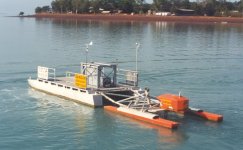 Less common renewable energy based technologies exist both commercially and experimentally including geothermal, ocean and hydrogen based energy systems. Less common renewable energy based technologies exist both commercially and experimentally including geothermal, ocean and hydrogen based energy systems.
These energy sources are discussed below.
Geothermal
In places like New Zealand and Iceland, natural geothermal resources exist where heated water comes out of natural underground springs or wells. The water temperature can be graded according to use. 30 to 69°C water is used for bathing. 70 to 140°C water is used for space and water heating (through a heat exchanger) and for drying. 140 to 220°C is used for drying, process heat and remote electricity generation. >220°C is usually used for utility scale electricity generation, process heat and steam and some remote electricity generation. When used for electricity generation, the water and steam are physically separated prior to entering the steam turbines.
Where natural geothermal springs aren’t present, geothermal electricity generating systems can still be utilised by drilling bores into suitable regions of hot dry rock (HDR). At these sites a heated geological formation, usually composed of granite, is injected with cold water through a bore. The water is heated by the HDR and returns to the earth’s surface via a separate bore. When heated sufficiently and pumped under pressure, the water turns to steam suitable for powering steam turbines. Mulka is home to what is believed to be Australia’s first geothermal power systems whilst Birdsville in QLD is another working example of economic geothermal power. Both of these sites utilise low-temperature Organic Rankine Cycle engines that are a product of Enreco Pty Ltd, an Alice Springs-based company.
More information and recent research about hot rock energy can be found at the Australian National University website and this Wikipedia article.
back to top
Ocean power
Power derived from the ocean is a result of harnessing the conversion of potential energy (changes in height) into kinetic energy (flow). Various methods have been derived to do this and include:
- Ebb Generation
- Flood Generation
- Marine Turbines (aka tidal turbines)
- Tidal Fences
- many others…
Almost all commercial ocean based power generation systems utilise a hydro turbine to convert water flow to rotating mechanical energy for conversion to electrical energy using a generator. The way in which the flow is produced or concentrated is the main variable.
Some systems use barrages to block the natural water flow, only allowing it to pass through a turbine, similar to many land-based hydro systems that use dams. Some systems use natural ocean-bed or land formations (islands) to concentrate the flow towards a marine type turbine. The largest disadvantage of these systems is that they only operate for about 12 hours out of each lunar cycle (approx 24 hours).
Other ocean power systems rely on the short-term height oscillation of waves. These systems are restricted by the amplitude (height) of the waves, but can be operated continuously over a 24 hour period. One such technology being trialled near Port Kembla, in New South Wales, involves the concentration of waves to move air, which powers an unconventional wind turbine.
Another scheme involves floating tubes or buoys and converting the vertical oscillations into electricity through hydraulic or mechanical means.
Further reading and research can be found through the Tidal Power Wikipedia article, or the Research Institute for Sustainable Energy website.
Another less common form of sustainable energy is called Ocean Thermal Energy. Ocean thermal energy conversion utilises the temperature differential between the surface of the ocean and the temperature at a depth of about 1km. The system utilises the temperature difference to operate a heat engine in either a closed cycle or open cycle system. This technology is very immature and trials to date have been unconvincing in terms of commercial viability. More details can be found at the Research Institute of Sustainable Energy website.
back to top
Hydrogen & Fuel Cells
A common misconception is that hydrogen is strictly an alternative fuel source. This is not strictly true because hydrogen is not commonly found in the natural environment as a gas, liquid or solid. Instead it is found in vast quantities tied to other elements, usually in the form of hydrocarbons, which themselves are the fuel source. Essentially, hydrogen is processed from another source or it can be used as an energy storage medium. Even so, petrol and diesel also fall into this category, as they are simply a refined product from a different source - oil.
Much like petrol is refined from oil, hydrogen can be refined or ‘cracked’ from natural gas (for example). It is the source (oil or the natural gas) that determines the real sustainability of the end product. Where hydrogen is generated from the electrolysis of water using a renewable electricity source, the hydrogen can be considered as a renewable source of energy. If the hydrogen was ‘cracked’ from natural gas in a plant that ran on gas fired electricity, then the hydrogen could hardly be called sustainable.
Fuel cells generate electrical energy through an electro-chemical reaction. These systems convert a fuel, such as diesel, petrol, natural gas, hydrogen or methanol and an oxidising agent, usually oxygen, into electricity. Where pure hydrogen and oxygen are used, fuel cells have no emissions other than water and are obviously much more environmentally friendly. Other fuels however produce CO 2 among other pollutants that need to be considered. Fuel cells often run at a higher efficiency than internal combustion engines but are bulkier and are currently more expensive per kW output. To find out more on fuel cells and hydrogen, try these websites:
back to top
|
|

